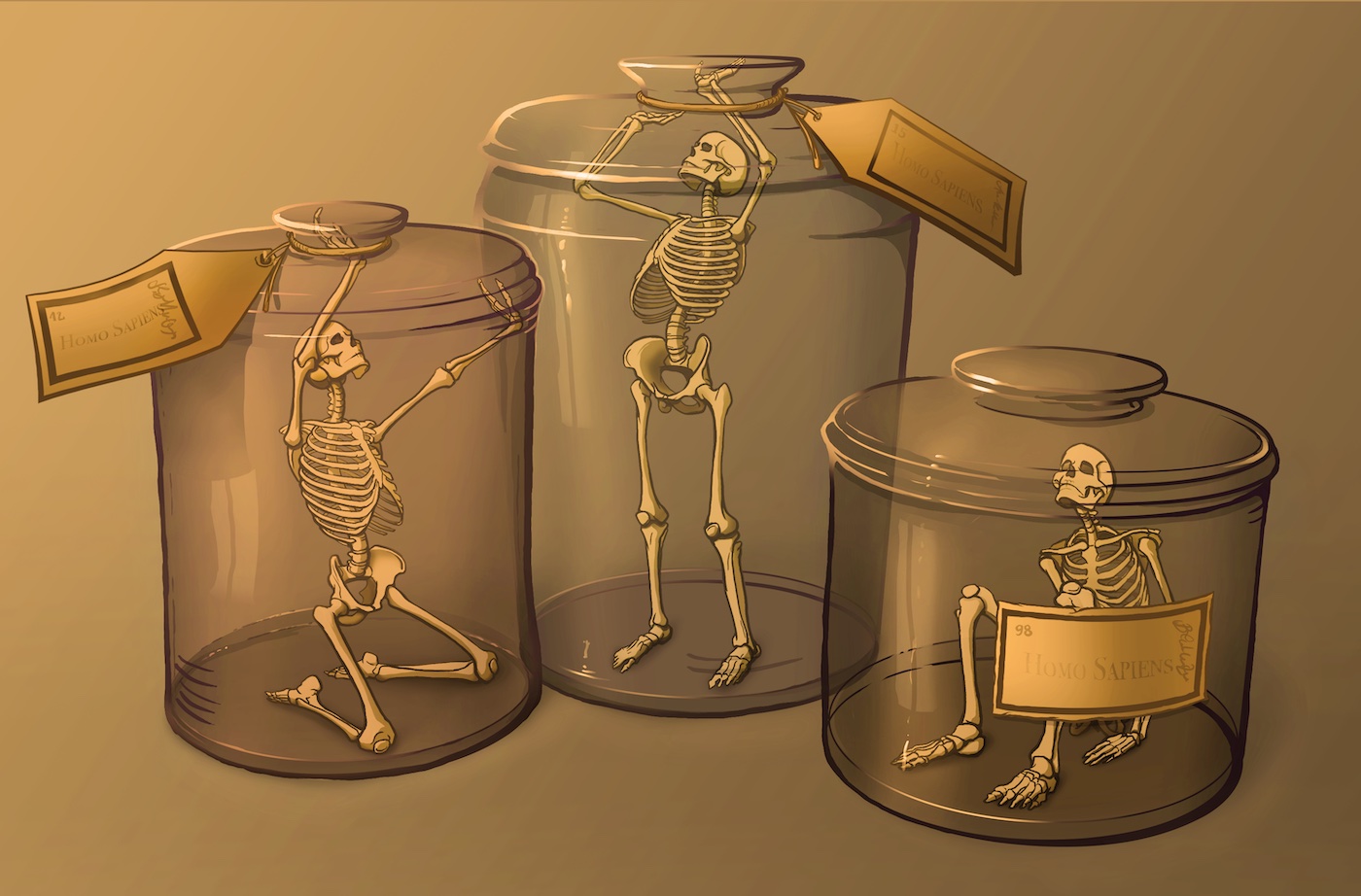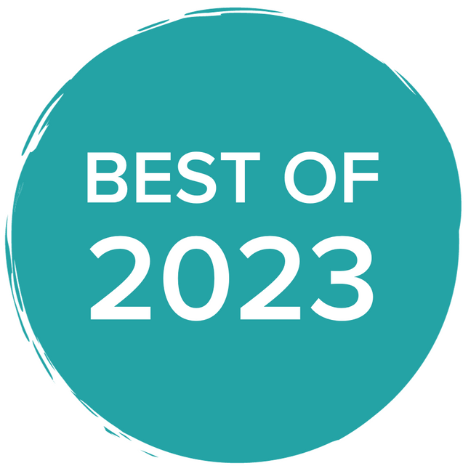Philadelphia’s Mütter Museum Takes Down Digital Resources
5:02 minutes

This article is part of The State of Science, a series featuring science stories from public radio stations across the United States. This story, by Alan Yu, was originally published by WHYY.
 Robert Pendarvis gave his heart to Philadelphia’s Mütter Museum. Literally.
Robert Pendarvis gave his heart to Philadelphia’s Mütter Museum. Literally.
He has a rare condition called acromegaly, where his body makes too much growth hormone, which causes bones, cartilage and organs to keep growing. The condition affected his heart, so much so that a heart valve leaked. He had a heart transplant in 2020.
Pendarvis thought his original heart could tell an important story, and teach others about this rare condition, which is why he was determined to put it on display at the Mütter Museum.
The Mütter Museum is a Philadelphia institution, a medical museum that draws hundreds of thousands of visitors to its rooms filled with anatomical specimens, models, and old medical instruments. The place is not for the squeamish. Display cases show skulls, abnormal skeletons, and a jar containing the bodies of stillborn conjoined twins.
Pendarvis thought it would be the perfect home for his heart — and more.
“I wanted to give my skeleton if I died because of the acromegaly information that they have at the museum. That was what was important,” he said.
A curator at the museum interviewed him and put a video about him and his old heart on their YouTube channel. Pendarvis still sees doctors regularly, and whenever he meets a new healthcare provider, he shows them the video as a way of explaining his complex health history.
But a few months ago, he noticed that the video had disappeared without a trace.
“It’s a little frustrating because I use Mütter museum’s website … to tell practitioners and nurses about me.”
And beyond doctors and nurses, he said people in the patient community know about him because of the Mütter Museum’s video of his heart, which is exactly what he had in mind when he made his donation.
“I did have to sign legal paperwork saying it belonged to them so they could do what they want to do with it. But for them to bury it in their archives so soon after I gave it to them would really be an injustice.”
And it appears that the museum itself has had a change of heart about its role, what it presents and how. It’s not just Pendarvis’ video that has vanished: all of the museum’s online exhibits and YouTube videos are gone. The Mütter Museum’s YouTube channel has more than 100,000 subscribers.
There has been an ongoing, broader discussion in the museum world around displaying human remains, which has brought up some difficult questions many institutions are grappling with.
Read the rest of this story on WHYY’s website.
Alan Yu is a science reporter for WHYY’s The Pulse in Philadelphia, Pennsylvania.
SPEAKER: Charles, you grew up near Philadelphia. Do you remember visiting the famous Mütter Museum as a kid?
CHARLES: Yeah. It was definitely one of the more unusual class field trips.
SPEAKER: Right. It is no ordinary museum. It’s a medical museum, chock full of unusual items.
CHARLES: Yeah. What I remember most was the scary-looking antique medical tools. But there are also skeletons from people who had rare bone diseases, livers of conjoined twins. In the pantheon of museums, it was kind of creepy.
SPEAKER: Well, the museum has been under a microscope recently because of a dilemma it faces around displaying human remains. Joining me to talk about this story is my guest, Alan Yu, science reporter for The Pulse from WHYY Public Radio in Philadelphia, Pennsylvania. Alan, welcome to Science Friday.
ALAN YU: Hi. Thank you for having me.
SPEAKER: So there have been conversations in the museum world for a while about the ethics of displaying human remains. How is this playing out within the Mütter Museum?
ALAN YU: Yeah. So the Mütter Museum, like any museum that has human remains in their collection, has obviously had to think about these issues, right? They’ve always, to my understanding, tried to look for the provenance of where their specimens come from, at least in recent history. They’ve also tried to find living donors, so talked to people who can clearly consent to having their bodies or parts of their bodies displayed in the museum.
And so it’s an ongoing process for them, and one that did not begin recently. They’ve always had to think about this.
SPEAKER: But recently, you discovered something odd. The Mütter Museum has deleted a lot of its digital presence, including videos from its very popular YouTube channel. So what happened?
ALAN YU: Yeah. So at first, it wasn’t quite clear what happened. And so I talked to the current museum leadership. And they said that this is part of a reassessment that they’re doing. They’re basically going through everything the Mütter has, both in their physical collections and in their online exhibits.
And in their words, they want to make sure that it is respectful and appropriate. And in the meantime, they’ve made the decision to on list all of their YouTube videos and also take down all of their online exhibits. And they said that this will continue until they finished reassessing their entire collection. And they don’t know how long this will take.
SPEAKER: You spoke with a person who donated his heart to the Mütter Museum after he received a transplant. Will you tell me the story?
ALAN YU: Yes. So this is a gentleman named Robert Pendarvis. And he has a rare condition called acromegaly. And the simple explanation is that his body makes too much growth hormone, and so his bones, his cartilage, his organs will keep growing, and this affects his heart as well, so much so that one of his heart valves actually leaked, and he had to have a heart transplant.
And before he had his transplant, he had actually been to the museum and saw some of their collections and exhibits about his condition. And he thought that his heart could tell a very important story here and educate more people about this condition. And so he was quite determined that after he had his heart transplant, he wanted the Mütter Museum to put his old heart on display.
And he said that he actually– whenever he meets new doctors and new medical providers, he tells them to Google the YouTube video that the Mütter Museum did about him, and they interviewed him. And he found out that the museum had unlisted all the videos when he went to a doctor, and then he couldn’t find the video anymore. And so he was actually quite upset about this.
ROBERT PENDARVIS: I mean, I did have to sign legal paperwork saying it belonged to them so they could do what they want to do with it. But for them to bury it in their archives so soon after I gave it to them would really be an injustice.
ALAN YU: And he was very much set on this. He said that even if he had died, he would want the museum to have his skeleton because that’s how much the education means to him.
And so since I published my story, the Mütter Museum said that they’re aware that this has created concerns among supporters, and that they take these very seriously, especially the concerns that taking down the online exhibits make the museum and the exhibits less accessible. And they said that in the coming months, that they will host a series of discussions about the future and encourage people to share their ideas. And so that’s where they left it.
SPEAKER: Alan Yu is a science reporter for The Pulse from WHYY Public Radio in Philadelphia, Pennsylvania. Thanks for joining me today, Alan.
ALAN YU: Thank you very much for having me. Pleasure to be on.
Copyright © 2023 Science Friday Initiative. All rights reserved. Science Friday transcripts are produced on a tight deadline by 3Play Media. Fidelity to the original aired/published audio or video file might vary, and text might be updated or amended in the future. For the authoritative record of Science Friday’s programming, please visit the original aired/published recording. For terms of use and more information, visit our policies pages at http://www.sciencefriday.com/about/policies/
Kathleen Davis is a producer and fill-in host at Science Friday, which means she spends her weeks researching, writing, editing, and sometimes talking into a microphone. She’s always eager to talk about freshwater lakes and Coney Island diners.
Flora Lichtman is a host of Science Friday. In a previous life, she lived on a research ship where apertivi were served on the top deck, hoisted there via pulley by the ship’s chef.